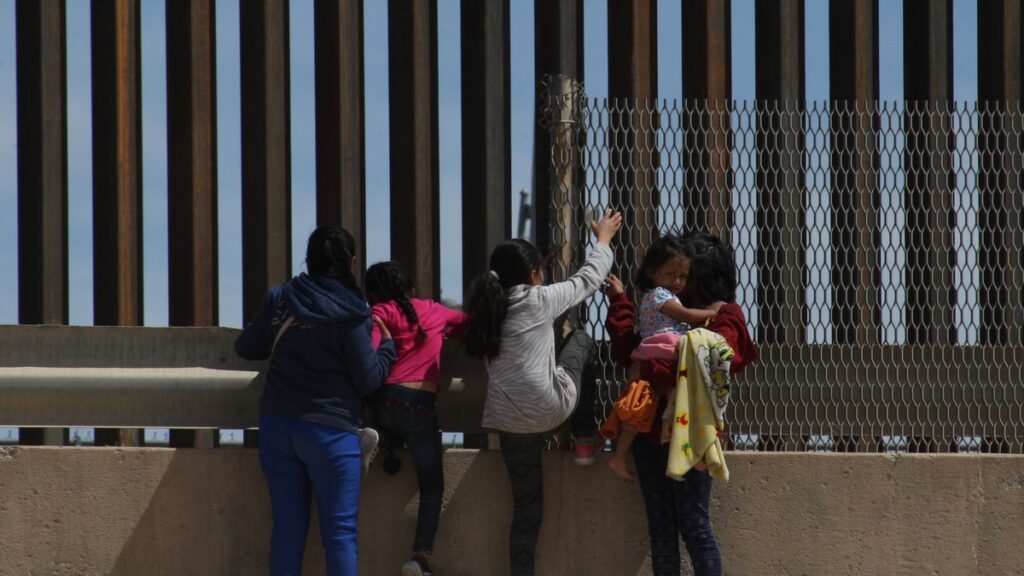
Migrant arrivals at the border have surged to record highs during President Joe Biden’s administration, posing a significant political challenge for him as he gears up for the upcoming election. Polls indicate widespread disapproval of Mr. Biden’s handling of the issue, with more than two-thirds of Americans expressing concern.
His potential opponent in the presidential race, Donald Trump, has also weighed in on the matter, criticizing a cross-party bill aimed at addressing the problem, claiming it lacks toughness.
However, dissatisfaction with the influx extends beyond Republican circles. Democratic city mayors struggling to manage the numbers have also voiced their frustrations.
Under President Biden’s tenure, over 6.3 million migrants have been detained crossing into the U.S. illegally, surpassing the numbers under previous administrations, including Trump, Obama, and George W. Bush.
ALSO READ: Study Reveals Harrowing Details, Claims ICE Keeps Immigrants in Solitary Confinement for Years
The reasons for this spike are multifaceted and complex, with factors predating the current government and extending beyond the U.S.’s control. Immigration experts have weighed in on what led to the border crisis, and we captured some of their thoughts.
Pent-Up Demand After Lockdown
The increase in migrant numbers can be traced back to 2018, mainly driven by Central Americans fleeing various crises, including gang violence, poverty, political repression, and natural disasters.
While detentions initially declined in 2019 due to increased enforcement efforts by Mexico and Guatemala, the onset of the pandemic in 2020 led to significant restrictions and subsequent reductions in detentions. However, as mobility restrictions eased in early 2021, migrant numbers began to rise again, reaching a peak of over 302,000 in December 2023.
Global Migration Trends
The surge in migrant figures at the US-Mexico border reflects broader global migration trends. Migration to affluent countries has reached unprecedented levels, with statistics from the OECD indicating a substantial increase in permanent migrants to its member states. The U.S. has seen a doubling in the number of people granted asylum, driven primarily by migrants from Venezuela, Nicaragua, and Cuba.
POLL — Should the U.S. Government Create a Path to Citizenship for Undocumented Immigrants?
From Trump to Biden
According to experts, the change in administrations in 2021 also played a role in the increase. President Trump’s hardline stance on immigration, including the construction of a border wall and increased deportations, created a perception of a closed border.
In contrast, President Biden’s more lenient approach, including a halt to deportations and a shift away from deterrent-focused policies, may have encouraged migrants to attempt entry into the U.S.
“Part of it is that they think they can just come. I think that’s just what they’re being told,” an immigration lawyer and professor at Case Western Reserve University in Ohio, Alex Cuic, explained. “They feel like there’s a pathway to come here,” he added. “It’s almost like an invite.”
ALSO READ: Biden Announces Aggressive Border Security Plans on Campaign Trail
While some view the Biden administration’s approach as compassionate, others criticize it for lacking sufficient immigration reform. With the failure of a cross-party bill in Congress due to Republican opposition, meaningful reform remains elusive.
In conclusion, the surge in migrant arrivals at the US-Mexico border under President Biden’s administration reflects a complex interplay of historical, political, and global factors with no easy solutions in sight.
You Might Also Like:
Federal Appeals Court Rules Trump Does Not Have Presidential Immunity in January 6 Case
John Kirby Apologizes for Biden Admin Lying about Warning the Iraqi Government Ahead of Airstrike
TikToker Claims Gen Z Isn’t Lazy, Says They’re Facing New Challenges
U.S. Retracts Claims It Notified Iraq About Retaliatory Airstrikes
Experts Accuse Biden Administration of Letting Non-Citizens Determine Political Representation
